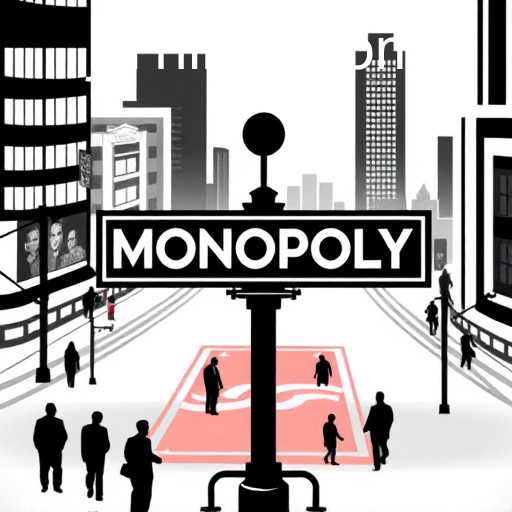Explore the concept of monopoly in the business world and how Jili 1 Link plays a role.
Understanding Monopoly and the Role of Jili 1 Link
Introduction to Monopoly
In today's global economy, the term monopoly often arises when discussing market dynamics and business practices. A monopoly exists when a single entity or company dominates a particular market or industry, limiting competition and setting prices without constraint. This dominance can lead to higher prices, less innovation, and reduced consumer choice, leading to significant economic and social implications.
Characteristics of a Monopoly
A monopoly typically exhibits several key characteristics. Firstly, there is a single seller in the market, meaning the firm controls the entire supply of the product or service. Also, there are barriers to entry that prevent other companies from entering the market. These barriers could be legal, financial, or technological, making it difficult for newcomers to challenge the monopolist. Additionally, monopolies often have price-setting power, allowing them to determine prices since there are no competitors to offer alternatives.
Causes of Monopoly
The causes of monopoly can vary but often include factors such as government regulation, control over key resources, and technological superiority. Government regulations might grant certain companies exclusive rights to offer a service or produce a product, creating a legally sanctioned monopoly. Control over critical resources—such as water in arid regions or high-demand minerals—can also lead to monopolistic scenarios. In addition, a technological edge can give a company an advantage that others cannot surpass economically.
Impacts of Monopoly
The impact of monopolies on economies and societies can be profound. On one hand, monopolies can lead to higher prices and limited product choices for consumers. Without competitive pressure, a monopolist may lack incentives to improve quality or innovate. On the other hand, some monopolies drive significant innovation, pushing industry boundaries due to their substantial resources.
Jili 1 Link: A Modern Twist
In today's digital age, platforms such as Jili 1 Link have altered how we consider traditional monopoly structures. Jili 1 Link acts as a digital connector across industries, potentially serving both cooperative and competitive roles. By linking businesses on a shared platform, it enables entities to harness efficiencies and collective bargaining power that were previously inaccessible.
Jili 1 Link's Role in Competitive Dynamics
The function of Jili 1 Link offers an insightful look at modern monopolistic structures. While traditional monopolies often exert control through singular dominance, Jili 1 Link promotes a network-based approach where entities collaborate rather than compete unilaterally. This has the potential to decentralize power pockets, creating a new spectrum of competition across digital spaces.
Advantages of Jili 1 Link
By utilizing a platform like Jili 1 Link, businesses can achieve a form of collective synergy, leveraging shared resources and knowledge to enhance market positions. The network effect—where added participants increase the overall value—results in a self-sustaining ecosystem that rivals traditional monopoly powers. Furthermore, allowing companies to interlink intensifies competitive standards, compelling traditional monopolists to adapt or lose market significance.
Potential Concerns and Challenges
Despite numerous advantages, the rise of platform models such as Jili 1 Link isn't without challenges. Some critics warn of emerging platform monopolies where a few platforms gain control over significant digital real estate. These platform monopolies could potentially replicate traditional monopoly issues, such as stagnation and exclusionary practices.
Conclusion
In conclusion, the dynamics of monopoly, particularly in the face of evolving platforms such as Jili 1 Link, illustrate both historical continuity and radical innovation within market structures. By understanding these dynamics, we can better navigate the balance between competition and collaboration in the digital age. The future will undoubtedly challenge our current understanding with new models and approaches, where adaptation and foresight become key to thriving in this evolving landscape.




